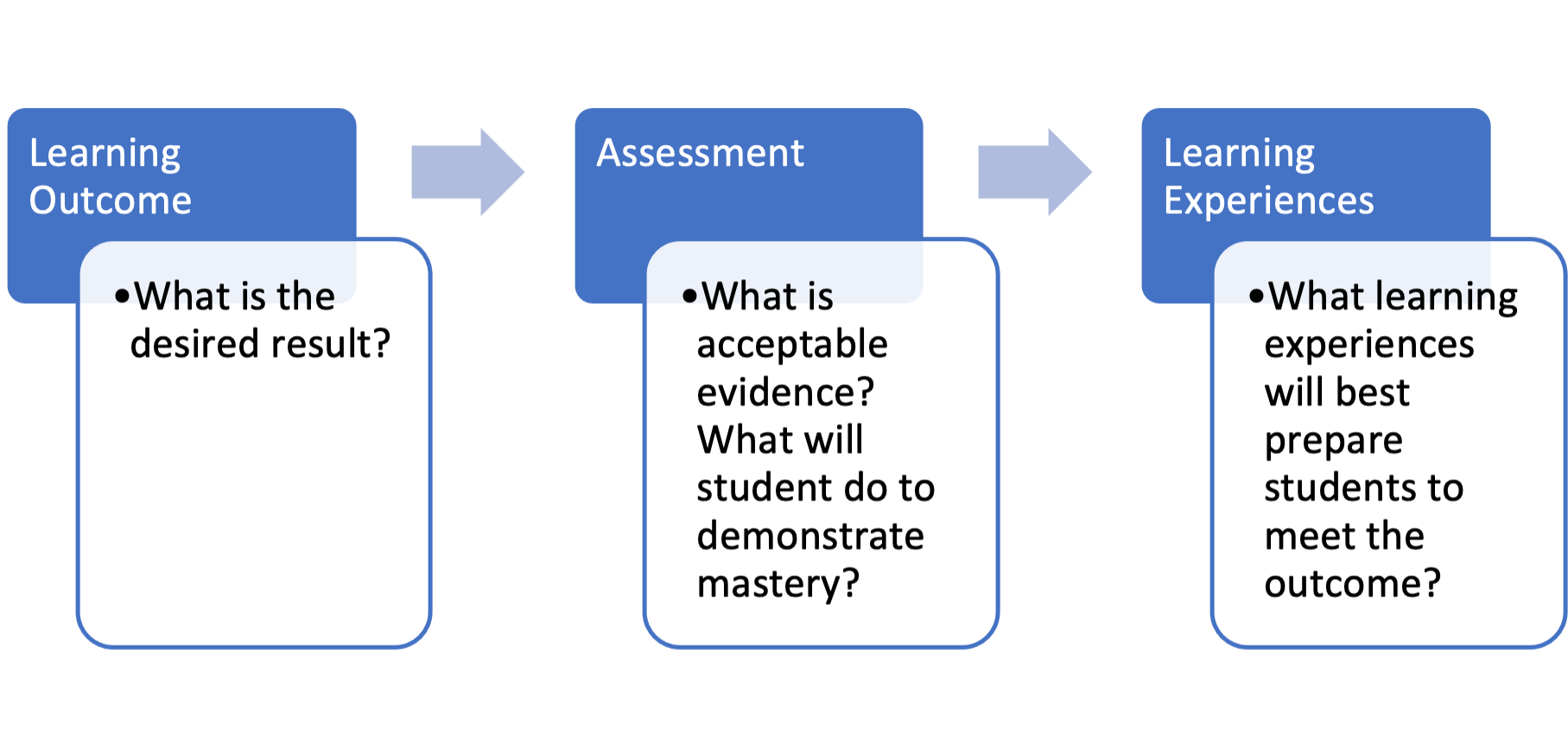-
From the student's perspective, what we assess signals what we think is important and what we want students to learn; it defines the actual curriculum. For example,
-
if our course assessment plan consists primarily of multiple-choice tests requiring recall of information, this tells students to focus on learning specific information (i.e., shallow learning). If our assessment plan requires students to work through cases in which they propose not only solutions but also their rationales, this sends a message that deep learning (i.e., critical thinking) is important (Saroyan & Amundsen, 2004, 97).
-
-
How students perform on an exam or final performance is as much a reflection of what they were asked to do during the learning process as it is about the design of the assessment itself. For example, students often take notes during a live or recorded lecture, complete recall-oriented assignments and/or performances, participate in discussions, and complete multiple-choice quizzes or iClicker questions to master the learning outcome and prepare for the upcoming exam. But unless these multiple-choice items assess conceptual understandings or require the application of new information, student learning will be shallow and focus on memorization for recognition purposes (Ambrose, et al., 2010; Bransford, Brown, & Cocking, 2000). Too often, the type of questions posed to students on quizzes, polling exercises, or practice assignments does not prepare students for exam questions that require them to solve authentic, real-world problems, evaluate policies, or produce creative works.
-
For any type of classroom assessment measure to be valid, it must measure learning that is stated in the course learning outcomes (CLOs). And from a design perspective, learning outcomes and assessments drive the selection of planned learning experiences, including content delivery, practice assignments, quizzes, discussions, etc. (Wiggins & McTighe, 2005).
-
When a course is designed coherently, the planned learning experiences "provide students with sufficient practice and feedback to enable them to accomplish the desired learning and be prepared for evaluation activities" (Saroyan & Amundsen, 2004, 98).
-

-
To Do:
-
Take an honest look at course alignment. Ask yourself the following:
-
Are the CLOS clear, observable, and measurable statements of expected knowledge, skills, and dispositions?
-
Do CLOs reflect core concepts and competencies for the level of this course (i.e., intro., lower or upper-division, graduate-level)?
-
Do you have a variety of formal and informal assessments, with more frequent formative assessments to monitor and direct student learning?
-
Taken together, are the assessments a solid reflection of the CLOs/expectations for students?
-
Do the planned learning experiences (LEs) for your course (i.e., content delivery, practice exercises, discussions, group work, assignments, etc.) adequately prepare students for the type of summative assessment utilized in each unit of study.
-
Do your assessments target lower- or higher-order thinking skills?
-
Are there ways you can improve the alignment of the LEs and assessments?
-
-
References:
-
Ambrose, S. A., Bridges, M. W., DiPietro, M., Lovett, M. C., & Norman, M. K. (2010). How learning works: 7 research-based principles for smart teaching. San Francisco, CA: Jossey-Bass.
-
Bransford, J.D., Brown, A.L., & Cocking, R.R. (2000 Eds.). How people learn: Brain, mind, experience, and school. Washington, DC: National Academies Press; 1st edition.
-
Saroyan & Amundsen, (2004). Rethinking teaching in higher education: From a course design workshop to a faculty development framework. Sterling, VA: Stylus Pub.
-
Wiggins, G., & McTighe, J. (2005). Understanding by design (2nd Ed.). Alexandria, VA: Association for Supervision and Curriculum Development.
-



